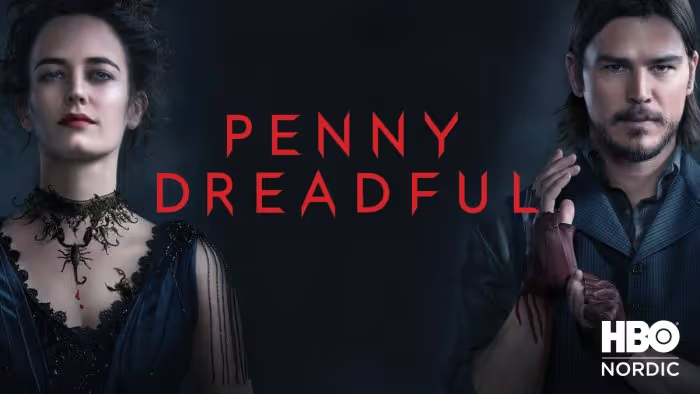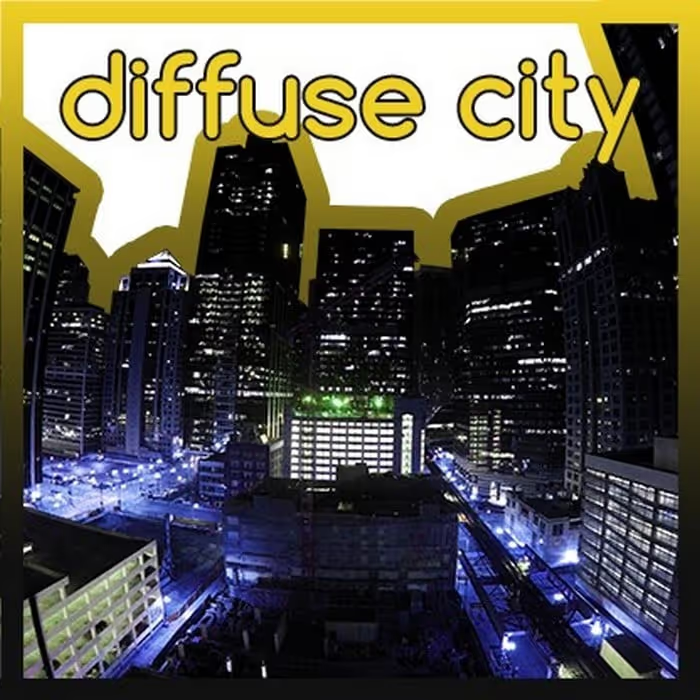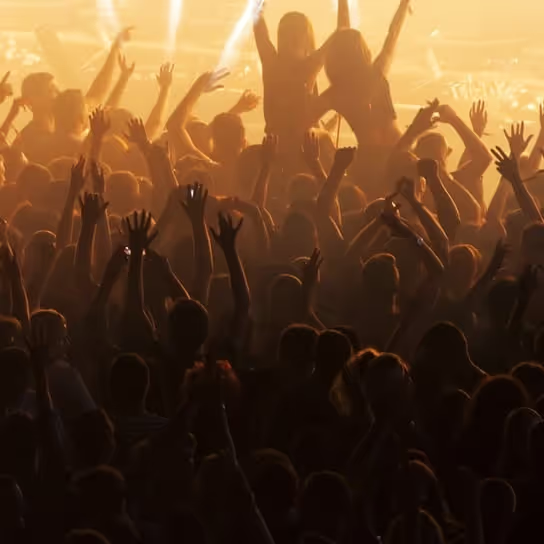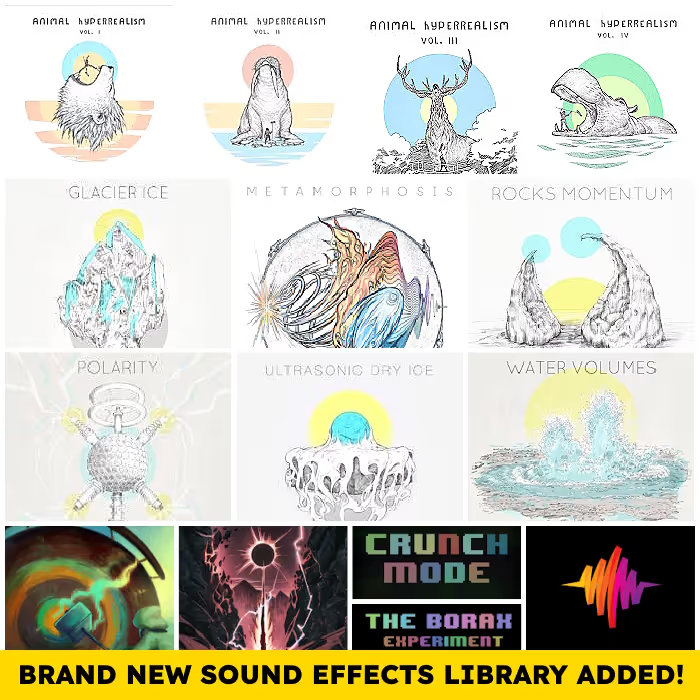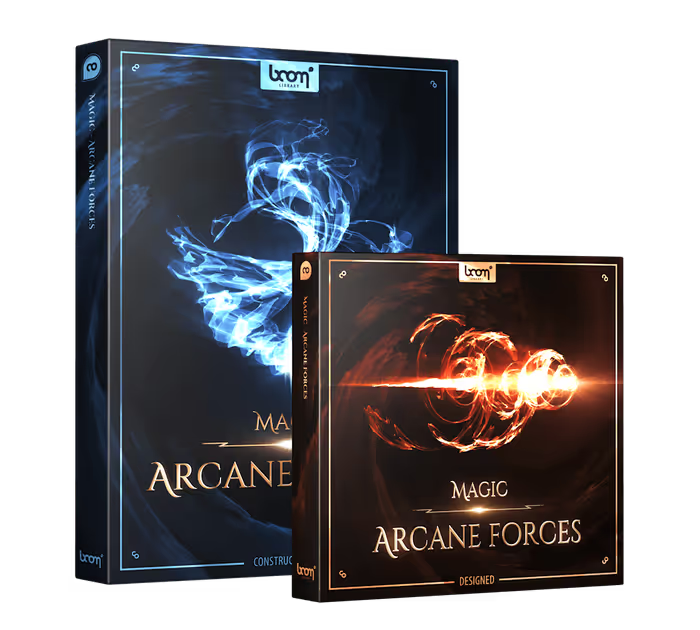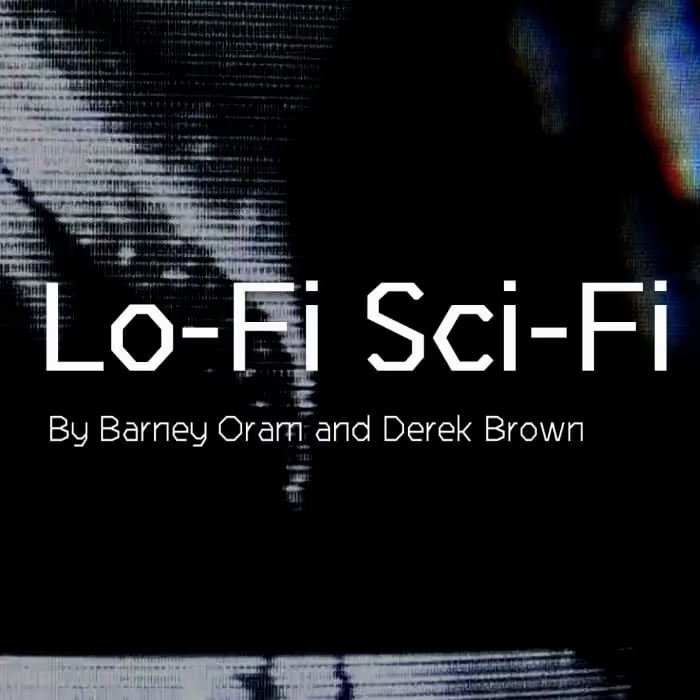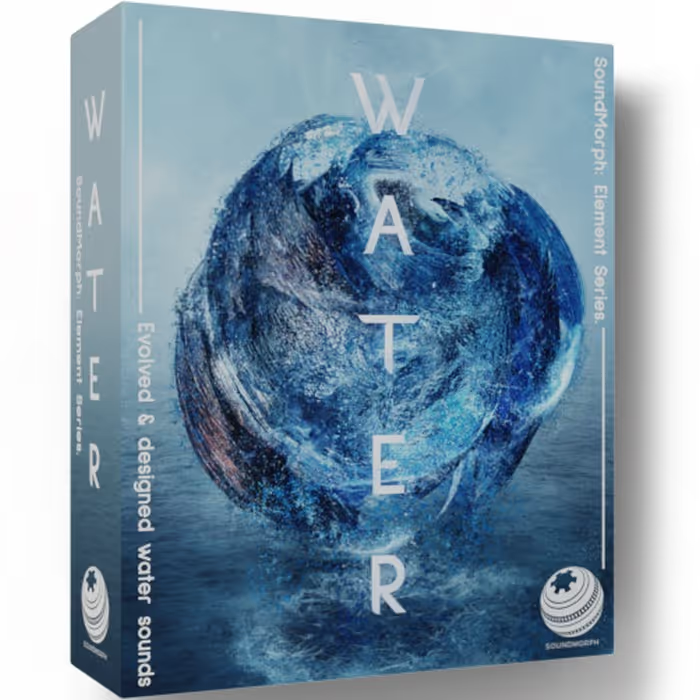The season finale premiered yesterday in most of the world, and for us Scandinavians, it’s available today on HBO Nordic.
I was lucky enough to get the chance to talk with Jane Tattersall, sound supervisor on Penny Dreadful. And in this exclusive, in-depth interview, she takes you behind the scenes on the sound for the show, shares her favorite sound moments – and what it takes to make sound that is well and truly scary.
Hi Jane, please introduce yourself and the sound team on Penny Dreadful:
My name is Jane Tattersall and I am the Sound Supervisor (sound fx and design) for Penny Dreadful. My co sound supervisor is David McCallum who oversees the dialogue. We are two of the partners at our company Tattersall Sound & Picture in Toronto, Canada where we do the sound post on Penny Dreadful.
Our sound effects team is small but terrific: Dave Rose who shares the editing with me, Brennan Mercer, foley editor and additional fx editor, and our two foley artists Andy Malcolm and Goro Koyama.
How did you get involved with the show?
We have done a lot of work for producers Sheila Hockin and Morgan O’Sullivan. When Showtime asked them to produce Penny Dreadful in partnership with Neal Street Productions (Sam Mendes and Pippa Harris) they wanted to include the team with whom they had worked before. We were delighted and jumped at the opportunity to be a part of this amazing show!
Can you describe the typical workflow on an episode?
We were about 4 shows into the 8 show series before we got to a typical workflow. At the start this included working with Spanish sound designer Oriol Tarago who had been brought on by director JA Bayona for his first 2 episodes. That was a really cool part of working on the series. Oriol spent time with Bayona in the cutting room in Dublin and Barcelona and so had an idea of the aural landscape for the show. He created sounds for a number of scenes and sent them as Pro Tool sessions to us.
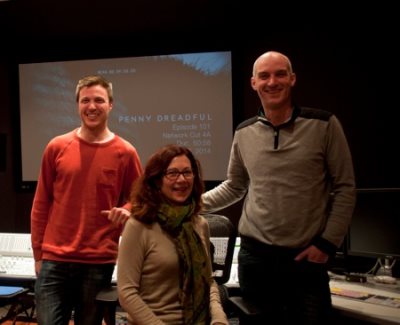
Instead he wanted the sounds to have purpose – to reflect the enormous societal and industrial changes occurring at that time. He wanted to hear the emerging mechanization, the changing technology, the sounds of steel, steam, and dehumanizing factory work.
He also was adamant that any sounds emitting from creatures – vampires, etc. had to be completely believable sounds. No larger-than-life monster creations for him.
With direction like this we had to figure out the sound effects, ambiences and sound world for the first two episodes, before we could tackle the rest of the series. Oriol sent us full sessions for about 10 scenes. We reviewed them and now that we had concrete ideas to discuss we had several conversations on Skype. Dave and I had already done a pass of the whole two shows ourselves so we amalgamated our sound with Oriol’s sound, carefully going through each scene. We were always respectful to Oriol and Bayona’s artistic vision, so while keeping the integrity of the concepts, we tried to blend our varying sensibilities in a way that was coherent with John Logan’s creation. It was not easy, first because we were on different continents, time zones and we were serving a number of different masters!
We mixed episodes 1 and 2 several times, always playing back via ISDN to all partners who at any one time could be in Dublin. LA, New York, Barcelona and/or London. We also had new music coming from the composer Abel Korzeniowski. He was very meticulous in giving us (and the producers) first a high quality digital version of the score and then fully orchestrated live recordings once his score had been approved. The quality of Abel’s score was a high point and enriched the mixes immeasurably.
Sound has a very powerful ability to affect the audience – and John knew exactly what effect he wanted the show to have.
Once the first two episodes were done our sense of John’s taste, his desired tone and feeling was getting better. Not that it was smooth sailing after that! It still took us all until about show 4 to really get into the mind of the show creator.
Sound can be tricky that way – hard to describe until it is heard, so we did a lot of interpreting. This is not uncommon of course since sound has a very powerful ability to affect the audience and John knew exactly what effect he wanted the show to have.
When we did finally get into a rhythm we would receive a locked episode and screen with the producer Sheila Hockin. Her notes and comments would be a distillation, or at least an amalgamation of the creative and technical comments from our show runner, John Logan, and the producers. This included going through the shows to see what dialogue would need to be replaced for technical or creative reasons. Dale Sheldrake our ADR supervisor, oversaw all sessions whether in London, LA, or Dublin. We tried to loop as little as possible but we consider ADR an essential part of making an understandable sound track! Often we are using just a syllable or two of a word to make the dialogue clear.
We would start by using the guide track as a roadmap. Sometimes we would assist in the sounds for the guide because the picture editor(s) would ask us to create sound design/sound effects/soundscape for scenes that depended upon sound to either help tell the story or provide detail that the show runner felt was essential to add before presenting to the producers. In this case we would receive a scene from the picture assistant, create several versions of mixed down audio, and send back. The assistant and editor would use all or part of this temp work and it would inform our sound creation for the final version.
Did you work on the episodes sequentially, or on several at once?
We generally worked on one episode at a time, except when we were mixing an episode. While mixing we would sometimes need to make changes or find options for sounds. We were always at work editing on a later episode so in that case we’d be working on the episode being mixed as well as editing on the show at hand. As much as possible, we tried to keep far ahead of the mix because the shows were complex and we needed time to play with and think about the sound.
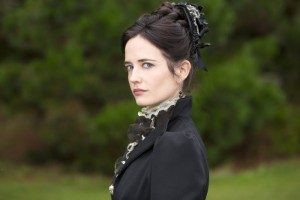
What are some of the sound sources for the show?
We have a very large sound library of both original recordings and purchased sound effects. From very early in my career I have recorded sounds while travelling or when I had access to a building or a new place. I’ve worked on a lot of films around the world and their sounds and location recordings have enriched the library. As well, the editors and assistants I work with tend to do a lot of recording so we have that to draw upon. Also there are many generous international fellow sound editors who are willing to share their sounds. In the case of Penny Dreadful we used some of Oriol Tarago’s sounds from the first two episodes in later episodes, particularly fighting sounds.
And a lot of the sounds were created especially for Penny Dreadful – through layering, using various plugins and processing tools and recording.
You can catch Penny Dreadful on Showtime, Showtime On Demand, Showtime Anytime, Sky Atlantic and HBO Nordic
Penny Dreadful weaves in lots of characters from classic horror fiction. How did you approach these characters – and the characters in general – in terms of sound?
John Logan had an idea for the first episode when Ethan (Josh Harnett) first meets Sir Malcolm (Timothy Dalton) in a dark opium den to go hunting for Sir Malcolm’s missing daughter. When Sir Malcolm emerges from the gloom to greet Ethan he wanted a low practically inaudible yet perceptible lion’s roar. This would give Sir Malcolm the stature and nature of his character. He had been a hunter and explorer in Africa so it totally suited his character’s past, his stature and his role as a vampire hunter.
Otherwise the only specific sound ideas for the characters were in relation to their worlds. Dorian Gray is wealthy and untouched by the world of worry and death. There is a beauty and stillness in his world so we tried to make it sound that way. Dr. Victor Frankenstein is a scientist not so interested in wealth or comfort. He lives in a poor, industrialized part of London, so there are the sounds of factory, engines and industry around him. Otherwise there are no specific sounds from or for the characters. They are meant to be real and complete human beings not fictional caricatures.
One exception to this was the vampire and the familiars which were humans that were in the process of becoming part of the vampire world. John Logan was adamant that the vampire and the familiars should sound human, and all sounds made should plausibly come from their own chest cavity and lungs.
Dave Rose recorded a tremendous number of yells and screams from every person on the sound team and a few others as well. We all had to scream and yell and moan and growl with as much tonal variety as we could.
We all had to scream and yell and moan and growl with as much tonal variety as we could.
He then took all our source sounds and created the moans and yells that emitted from the vampire and the familiars on the screen. Dave Rose is an amazing sound creator of vocals for creatures and he did wonderful work (in tandem with the two re-recording mixers Lou Solakofski and Ian Rankin) to create real characters.
The show – and soundscape – strikes an interesting balance between the obvious supernatural elements and more realistic, human qualities. How did you accomplish this balance in sound?
That is an interesting question. The balance was very subjective. In the mix before we had any producers listening in I would tend to push more towards realism whether it was in the foley, the ambiences or the vocals. Others would push towards supernatural sound design. Frequently we erred on the side of the supernatural because it is easier to do that and remove elements than spend time after the fact balancing and creating something unreal. On almost every occasion John Logan pulled us back to more realism.
Demonic presences and vampires abound in Penny Dreadful – how did you design the sounds for these?
I give full credit to Dave Rose for this area of the sound editing/design. As I mentioned earlier it was a bit of a struggle to ensure that these supernatural creatures sounded real and yet still unreal. Dave would spend time creating and editing and using plugins to design sound. I would listen to his work and be his sounding board – at least to my taste.
The dialogue was pitched, and manipulated a lot, but because it originated with the human voice it remained rooted in something real.
I had very quickly understood that John wanted to avoid cheap tricks for making the show scary, and so it could not be over the top. Plus John didn’t want scary, spooky creepy ambient sound; he wanted very real scary creatures that made scary sounds.
We used the demonic voices (treated Eva Green dialogue) as a base for the demon presence, since it was her evil side with which she was locked in a struggle. The dialogue was pitched, and manipulated a lot, but because it originated with the human voice it remained rooted in something real.
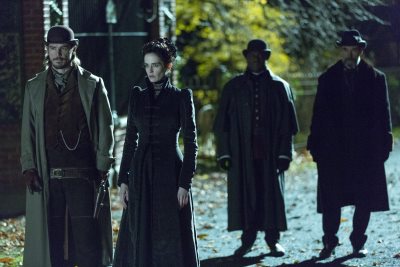
What makes for great horror sound, in your view? And what did you specifically do in Penny Dreadful to set a dark, sinister and scary tone?
Great horror sound to me is enveloping, sinister, very real but not readily noticeable, in fact, usually invisible. It is important that the sound is not relentless but that it ebbs and flows. The sound should focus the attention on whatever the film-maker has chosen to be the focus, and then should dial back a little when the audience has set forth on the journey. It can be a series of scares – gets very quiet then suddenly gets loud but that is sheer manipulation and while a useful tool, can be predictable. In other words, when the sound gets quiet, you should be aware that it’s about to get loud! For us, as for many similar shows, we often work with low frequency tones. The audience senses/perceives low frequencies as a feeling of dread and danger.
Bonus: Explore the Ultimate Horror Sound Guide:

Any particular sequences or episodes that you’re particularly fond of when it comes to the sound design?
I like so many scenes and moments and am thrilled that I have a great team where we can play to our own strengths. I love detail and a sense of place and time created with hundreds of small, layered sounds. Dave Rose loves big complex sounds and likes it when the sound can have its moment to shine.
It’s subtle but I’m partial to the ambiences around Victor Frankenstein’s apartment. Lots of steam and mechanical thumping. I tried to make it sound like the bowels of Metropolis – a hell-hole of the industrialized world. I also loved, loved, loved the sounds in episode 7. This whole episode is set inside Sir Malcolm’s house, and it revolves around Vanessa as possessed by the devil.
I tried to make it sound like the bowels of Metropolis – a hell-hole of the industrialized world.
Eva Green’s performance is out of this world and she is essential to why the episode works so well. The root of the sound is her actual screams. She has a voice that is rich with a wide range of frequencies. Her own voice can range up and down within and sentence and she gave us a variety of recordings with which to play. Dave Rose did all of this and I think it sounds amazing.
What’s next for you and the sound team?
Coming up is The Book of Negroes, a miniseries based on a best-selling book about a little girl stolen from Africa, taken to America as a slave, and her life that unfolds. It is full of surprises and strength and heart. It is a great story and will be very satisfying to help tell with sound. As well I’m doing an indie film from Canada called October Gale, directed by Ruba Nada, and then season 3 of The Vikings. When that’s over it will be time to get back into Penny Dreadful, season 2!

